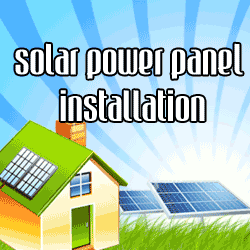

There is a looming reality taking place in the society today. Increasing concerns on global warming and rising energy prices are on the loose, and so, the concept of high-performance homes and sustainable designs are considered to be urgent issues. The need for more energy-efficient utility and facility designs is inevitable.
A home's energy and conservation points are located within the house itself. A large part of domestic costs are from maintenance, service, and energy. Reports on energy analysis have shown that homes together with buildings, commercial establishments, and facilities contribute tremendous consumption of resources especially energy, which accounts nearly 40 - 60% of the total consumption. Lighting, refrigeration, plumbing, and fire-fighting facilities represent the largest percentage of structural energy demand. Because of the impact on energy, it is important that efficient facility designs are integrated into a home or building.
These things when left unattended can wreak havoc not only to the structure's life cycle but more importantly on its operation and maintenance cost. With this, it is not surprising why homeowners do not just entrust facilities design to ordinary contractors. They assign it to the best professionals in town who can weave in all aspects and engineer the whole into a fine working specimen that can breathe efficiently for years to come.
Considering the many parts of a home, the kitchen is considered to be one of the most important sections. This is where the family's food are being stored, prepared, and cooked.
Hence, it is important to maintain safety and security at all times to ensure harmonious work in the area. Additionally, this is where most of the appliances are located. Hence, among all other parts in the house, the kitchen contributes almost half of the total energy consumption. With this, it is equally important to create a kitchen design that will match the requirements of integrated or sustainable design.
Why Sustainable Design?
Sustainable design, when incorporated within a home or building, triggers high performance and various advantages and keep energy consumption at a minimum. Creating sustainable kitchen design includes putting together "green design strategies" into standard design criteria. With this, you may consider the following areas:
1. Lighting design
Lighting efficiency is an essential factor in developing high-performance in homes. Like HVAC, several factors are necessary to ensure sustainable development in building operations - quality of lighting, aesthetics, energy efficiency, etc.
Designs that provide occupancy or light-level sensors, lighting controls, and dimming systems to determine when lights are illuminated, optimizes lighting needs, and provides homeowners with timed overrides. With advanced lighting designs, modulated lighting levels in proportion to available daylight are possible, which, in the end, saves energy. With this, you can maximize light coming from natural source. You may also use window panels that are specifically designed for optimizing the principles of sustainable development.
2. Materials
Wallpapers, table countertops, wood cabinets, carpet tiles - every material used in your kitchen should be designed according to the current standards of sustainable or green design. In this way, you can be sure that whatever material you use in your kitchen, you can be sure that you do not just provide clean living to your family but you also help protect the environment.
3. Appliances
To match the sustainability of your kitchen, make it a point to use appliances that provides high energy savings and are environmentally friendly. Among all appliances being used in the kitchen, refrigerators are considered to be the most important. This is where you keep and preserve your food.
Temperature control is critical to food safety, shelf-life and quality. However, in most cases temperature control and energy consumption do not go along together. You want to keep food fresh by providing better gauge on the temperature, which will eventually put an impact on your energy consumption. Higher temperature means higher electricity bills. But with a good refrigeration design, you can be sure that you can keep these two factors working harmoniously together.
With increasing requirements for energy efficient facilities in most countries and with the growing environmental awareness, the idea of incorporating sustainable design into your kitchen will not just provide your family a better environment within your home but also offer the community a better place to live.
Jo is an author and publisher for 'Benchmark Interiors' - http://www.benchmarkinteriors.co.uk - a UK kitchen furniture company that focuses in bespoke handmade kitchens, bedroom and home office furniture development and fabrication. If you are eager to create a sustainable kitchen design and want it to be austere yet useful or just want to know about bespoke kitchens design then you ought to have a look at Benchmark Interiors.
Article Source: http://EzineArticles.com/?expert=Jo_Alelsto




0 comments:
Post a Comment